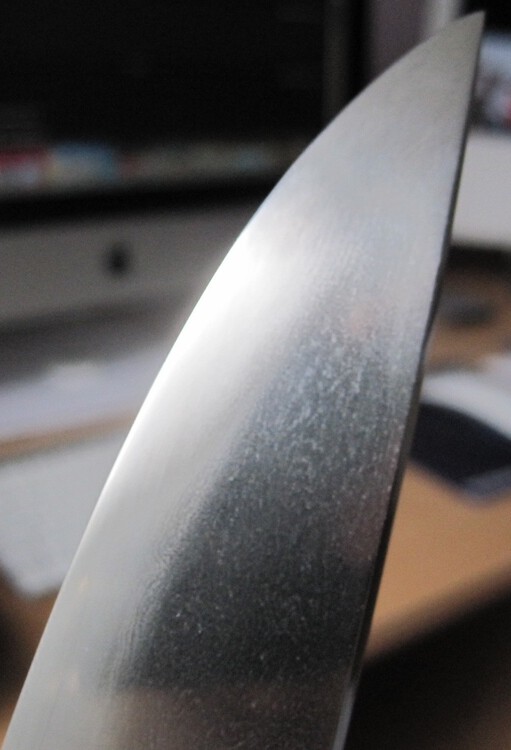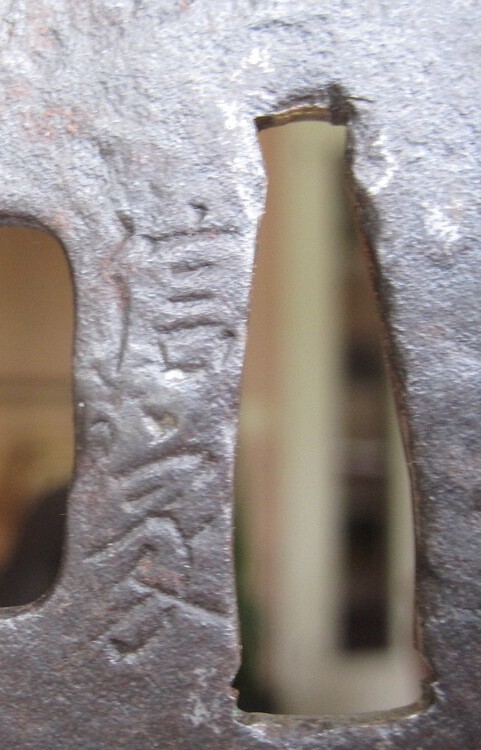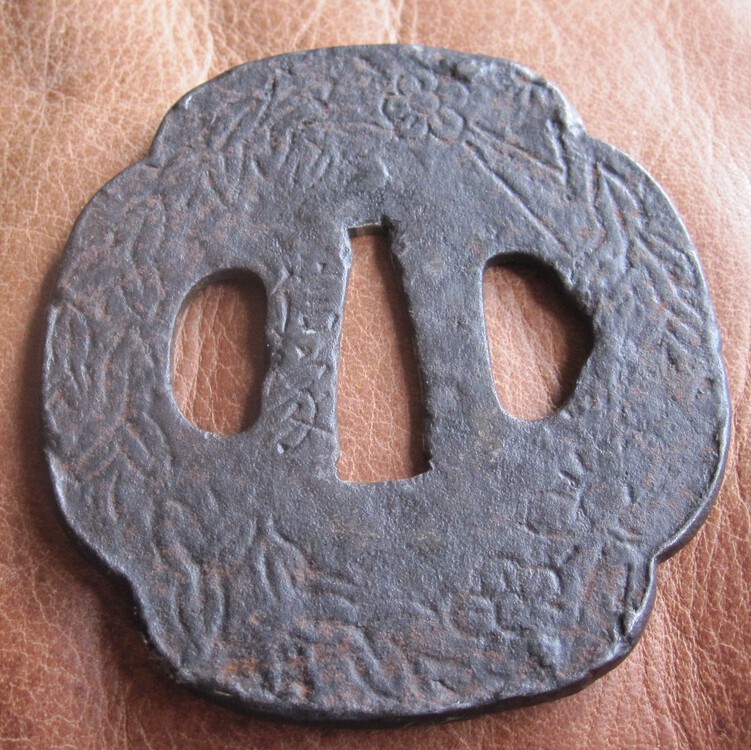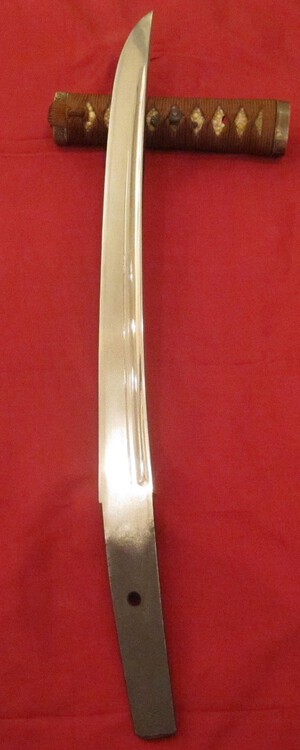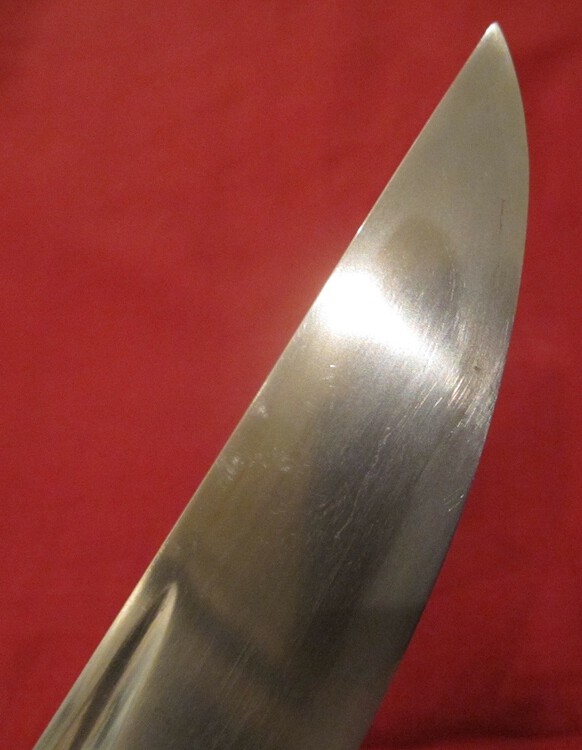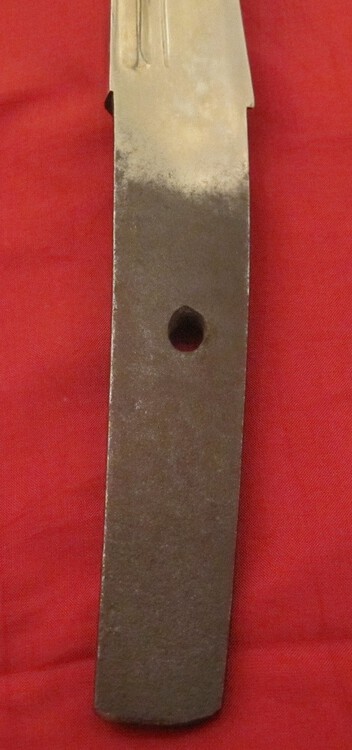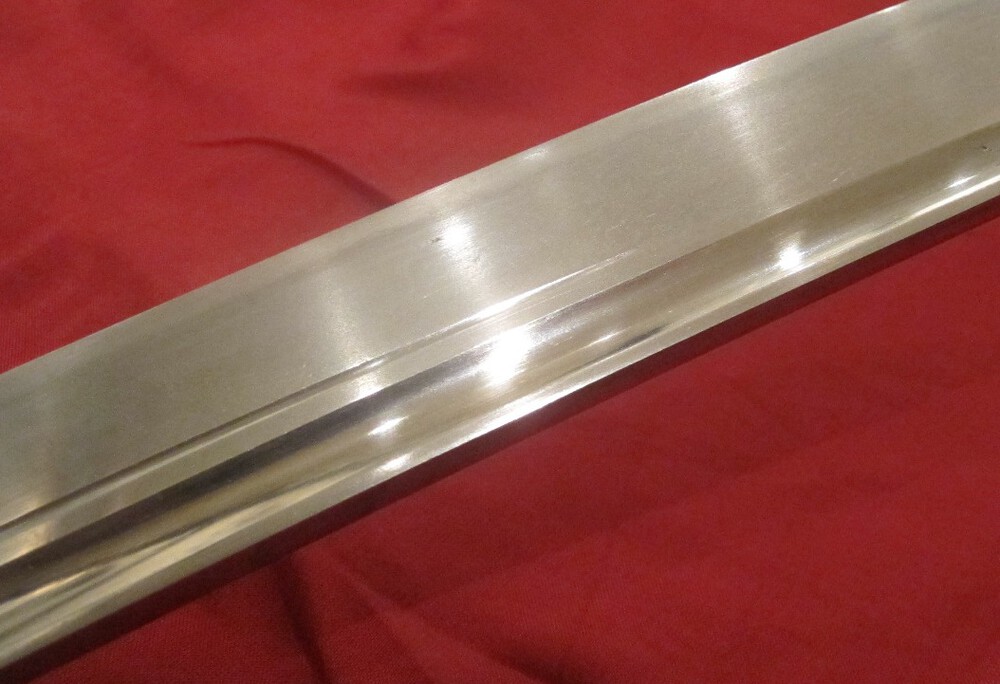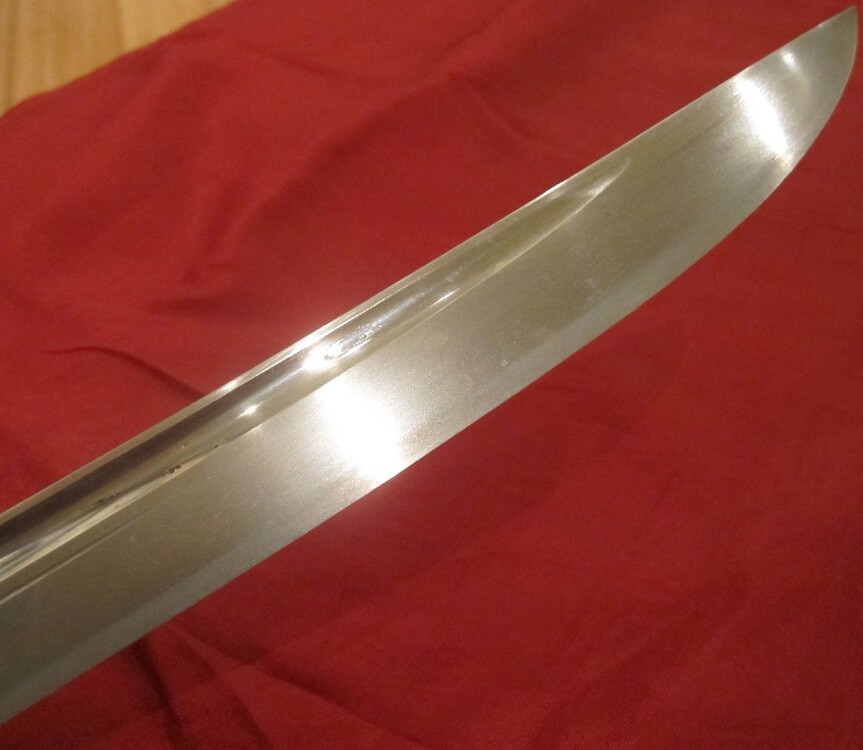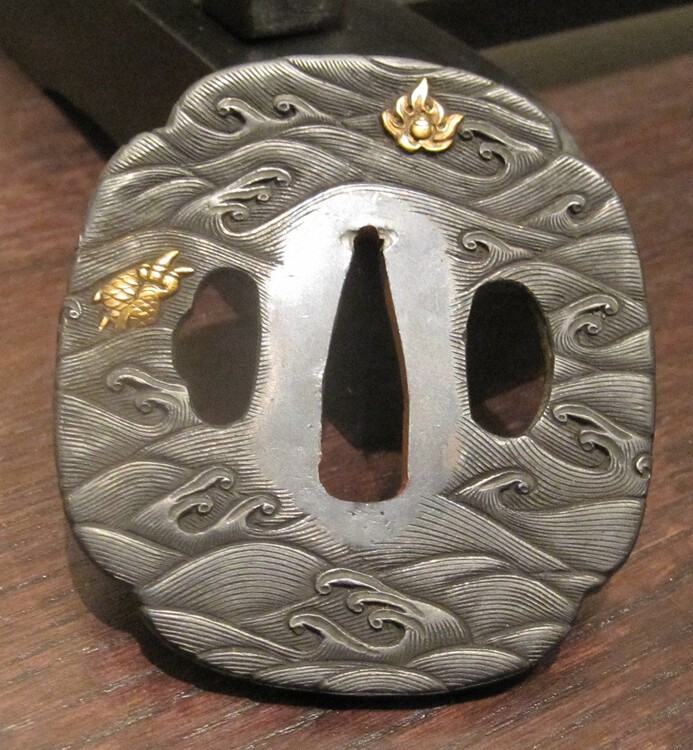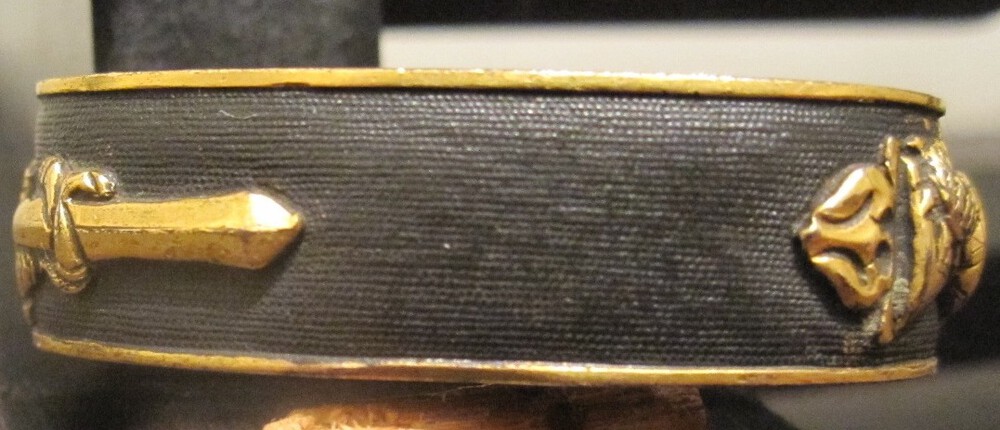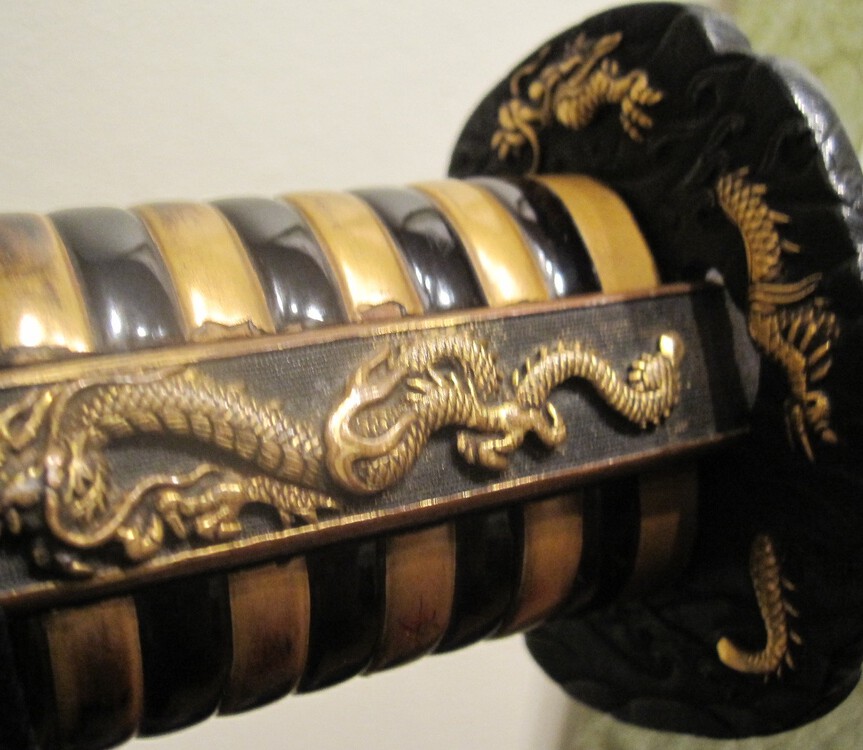-
Posts
537 -
Joined
-
Last visited
-
Days Won
2
Content Type
Profiles
Forums
Events
Store
Downloads
Gallery
Everything posted by Viper6924
-
First I must thank You all for an highly intresting conversation I´m soaking everything up like water. Second I feel this is another shinsa-projekt. I include some more pictures (it´s hard to take good pictures of the hada). One picture of the overall shape and one of the "long life" mei. Any idee´of the maker? P.S I really like the picture 0725. Looks like a an almost perfect set of evil looking eyes Thanks again! Jan
-
:D Ok, you asked for it: Perhaps Mokume mixed with Itame. The reason I ask is because I not seen this "wild mix" in any of my other swords. And then I saw a jihada called Yakumo-hada, which I think also could be a correct answer. The sword is a shin-shinto. But perhaps I´m barking up the wrong tree. Now let me have it... /Jan
-
Hi! This surface grain comes from a shin-shinto tanto. How would You described it? As always, all answers are highly appreciated! Jan
-
I´ve been doing some more research on this sword. And if I don´include the orikaeshi-mei (I will leave this hot topic for a future shinsa) and just look at the sword, I see some indication that this could even be a late nanbokucho period sword. Here goes: The rather shallow torii-sori, chu kissaki, hamon and of course the long tang. Ad to this it´s overall length and obvious sign of age. What do You true experts think? Am I completely out of the reservation on this one? Jan
-
Now it´s getting a bit intresting. Moriyama-sans questions is a valid one. I also agree that this sword must fall under the category tachi from the beginning on the account of the original length. Why than slap a katana mei on it? This is truely strange if the blade was made during the 14th century. But if it´s made let´s say 1400-1430 it could acctually been made as long katana in a time when tachi and katanas was being mixed out of preference on the battlefield. Could there be an reason for this. And again, is the features (based on the pictures) on the blade such that it could support an early Muromachi-blade? I can´t get my head around it. What I know is: I have a very nice looking sword with a good hamon and a very old looking tang. The blade show def signs of aging and repeated polishes. And amongst this a orikaeshi-mei. /Jan
-
The question is, based on the sword as a whole, if it could have been made let´s say early 15th century give and take a couple of years. Making it a mid-koto produktion? Or is the shape, hamon etc pointing it to a koto-blade from the 16th century? The fact that it has an orikaeshi-mei on a katana, historic wise, still can put it in early Muromachi-period when the transition from tachi to katana began. The tang with or without the orikaeshi-mei, still looks old like the Flintstones. With my very limited knowledge, I can find some features on this blade that supports an early Muromachi timeframe. But hey, I´ve been wrong before /Jan
-
An Orikaeshi-mei with a bad signature can always be a valid point. As I said, You can almost never be a 100% reagarding antiques. I got this sword from an auction I attended. And all the swords has been to an expert app. But the sword was listed as "An early-mid koto katana with orikaeshi-mei" That leaves a lot of room for deeper analys. Because of the fact that the last kanjis are missing, it gets even more important to read the blade and try to find a, maker/school and b, period of produktion. But that is, sorry to say, way over my head. And like Chris said, it is probably only possible via a shinsa. But I feel this forum is the second best place. I can only guess the period by looking at other swords in books and on internet. But I think it´s best this time to let the guessing be done by the experts. /Jan
-
Hi Jacques! The only thing I´m sure about is the orikaeshi-mei. Well as sure as you be on a an old japanense sword. It´s acctually easy to see the fold on the pictures. I just wish there would be some more kanjis readable. Any further info would be great. Especially a timeframe. But this is probably hard, based on pictures only. /Jan
-
Thanks a lot Jean and Chris. It´s a xxxx shame that the rest of the kanjis have been lost to time. A shinsa would def be a good idee´ for this one. I guess this would be the place to find out when the next shinsa in a country near Scandinavia would be held.Like England or perhaps Germany. Is there any possibility from the photos to place this sword in a timeframe? Thanks again! Jan
-
Hi! I continue my quest for knowledge about my small collection nihonto. This is a long cut down katana. My favorit blade. Comes with an old koshirae. I had it for 3-4 years now. Cutting edge:72 cm Complete length: 91 cm Mei: Bizen and perhaps Mitsu I think the pictures tells a good story for an expert. I have two questions. 1. Can someone make out the kanji and perhaps give me a maker of this sword? 2. Age? I value every opinion very highly!!! /Jan
-
Clear as a newly polished tanto It´s big difference between to two blades. Except perhaps the sugata. It´s so much more easy when you have something to compare it to. Well, this turned out to be an good thread for a rookie like myself. First the sunnobi-tanto versus the wakizachi and then some good points about koto-shinto features. Great! Want to thank everybody who took time to help me. And for all to know... I still think it´s more tanto than wakizachi Jan
-
Thanks Keith! It´s good the hear that the sugata in Your opinion resemble an old style. That was the first thing I noticed when a got the blade in my hand. I thought the narrow suguha hamon also was a sign of an older design. But I stand corrected. Great input Keith. I guess this is the only way to learn to read old Japanese swords. Trial and error. I will compare the metal in this blade with some old koto-blades I have. /Jan
-
Thanks again Chris! Well, I got two good reasons for putting this question on ice. And an ubu tang is always better than a cut one. A sunnobi-tanto :lol: with an ubu tang. Good enough! THANKS! Jan
-
Bless You, Keith! I agree that the tang looks crisp for a 500 year old blade. I´m just thinking that this tanto/wakizachi been cut down. Probably during the late Momoyama/Early Edo. And if this section from around this period looks like this, it might be an older blade from the beginning. The top section of the tang is smooth because it use to be the cutting section. The buttom part is a bit more rough. But then of course you must take the shape, hamon and other things into consideration. This is well above my knowledge. I´m sure You are right, I just got that feeling when I got the sword in my hand. Thanks again! Jan
-
Thanks for Your input Chris... if you are correct. But have a strong feeling that You are. And if you want to throw Your 5 cents into how old my tanto/waki might be, it would be great to :D /Jan
-
You go Guido I have a lot of books from different museums in the world. And if You check their collection of Japanese swords, it´s a complete jungle of 32,5 cm tantos, 34,5 cm sunnobi-tantos, 33,6cm ko-wakis and so on. And don´t even get me started regarding the small museums in Japan. Those displays can be really funny. Another question: Is a tanto (within the 30 cm border) more valuble than a 33 cm waki?. I have this feeling sometimes when You look at diff sites with Japanese swords for sale. And by the way. How old is my sunnobi-tanto...sorry wakizashi /Jan
-
I think You are pretty right in your analys of the o-tanto/sunnobi tanto/ko waki/waki-problem. I´m def. agreeing on your "Conflicting Terminology" But again. This it what makes the study of nihonto so fun. Perhaps we can agree to not agree? Start to sound like an old grumpy man, but how about the age? I also think nanbokocho is a bit to old for this blade. Perhaps not impossible, but a bit of a stretch. But an early to mid muromachi, can work based on the tang that have been shortend and the overall shape. It´s a bit hard to show in the picture, but the tang has that nice old patina that you look for in an older blade. If later period, please let me know why. I´m in this game to learn. Looking forward to all Your answers. /Jan
-
Let´s make it the third generation, and I buy my friend three beers. Sounds fair Thanks Guido! /Jan
-
Thanks for your quick answer, Guido!!! This Nobuie seems to be an intresting name. Can this be a orignal tsuba from this artist. Sounds to crazy!!! Perhaps I need to buy my friend 1 or perhaps 2 beers for it /Jan
-
Hi! I got this tsuba for free from a friend who knows I´m into Japanese weapons. Not the most beautiful tsuba. Flower motif with a two kanji mei. I translate it to Nobu-Naga? Correct? Any other info is an added bonus. Thanks a lot! Jan
-
I had a feeling that the length of this sunnobi-tanto/ko-waki would be the talk of the town. To me it really doesn´t matter to much as long as the blade gives me some satisfaction. A funny point of information is that this sword formely belonged to a old Japanese artist who collected nihonto. He had most of his collection app. And a old sticker was still attached to the blade when I got it. It said in both english and Japanese "long tanto". Thats it. But the main question stands. What about the age? I´m I on the right track thinking this sunnobi-tanto/ko waki is of an older period. Thanks for all Your input! Jan
-
Hi! This is a sunnobi-tanto I got awhile ago. Comes with a really nice akuchi koshirae. Mumei Nagasa: 33,7 cm Sori: 7 mm Hamon: chu-suguha, nioi deki Hi: Bo-bi with soe-bi Yasurime: Kiri Wow, I hope I got those names right After I made some research in my books and on the internet, I start to think it´s a bit older than I first guessed. Perhaps late Nanbokucho or early Muromachi. I base this on the narrow suguha, the hi and the sori. Its been cut down, at least a couple of centimeters, perhaps more. Please look at the pics and see if You based on this can help. Be gentle... Thanks! Jan
-
Thanks guys! Now I can do some more research about the artist. Thanks a lot! Jan
-
Sorry Brian! Will not happen again. /Jan
-
Well, here is a bunch of new pictures. Looking forward to Your comments about which Hidemoto it could be. Thanks in advance! Jan





